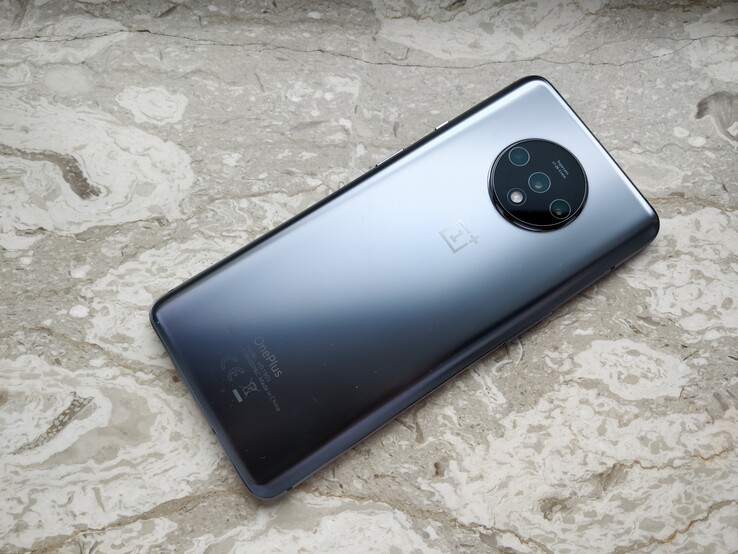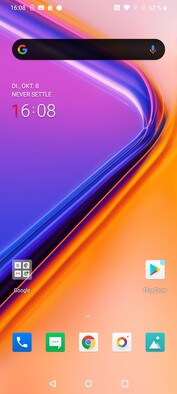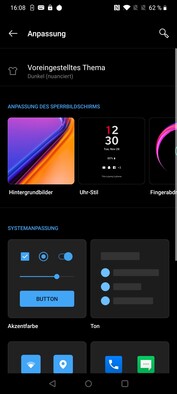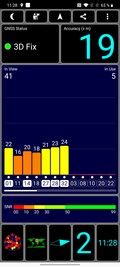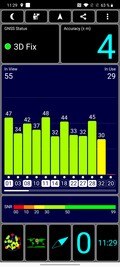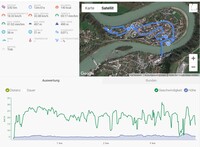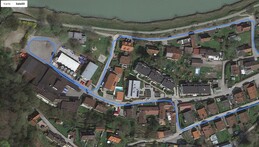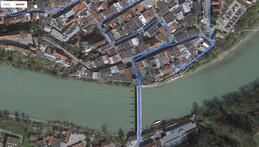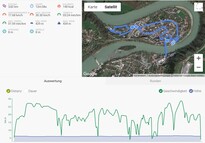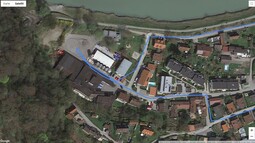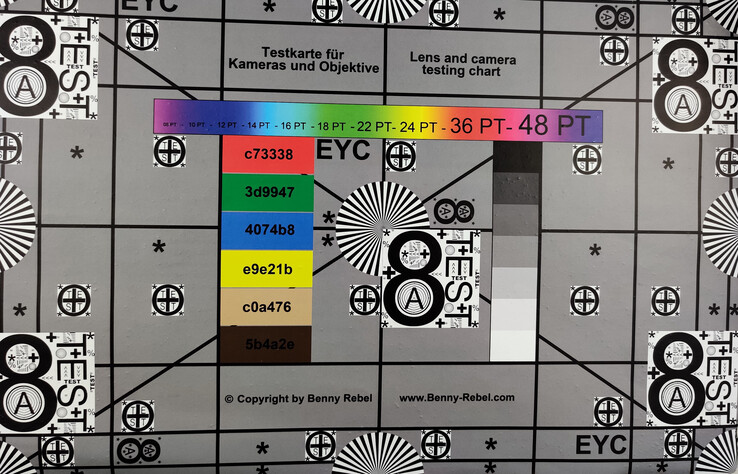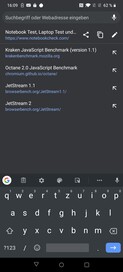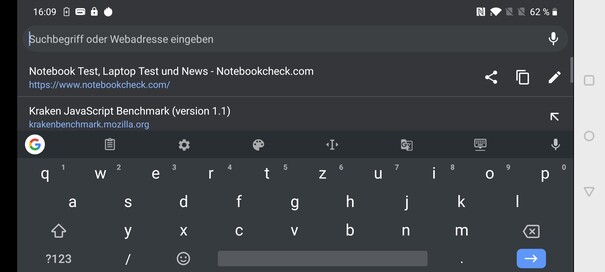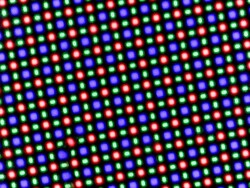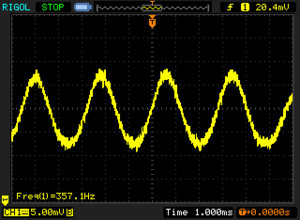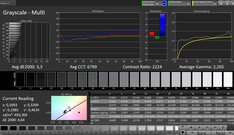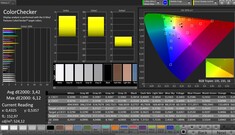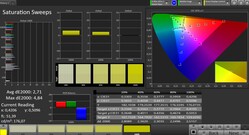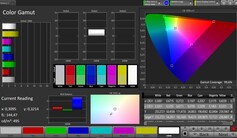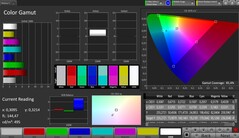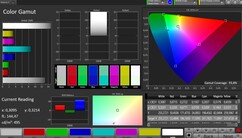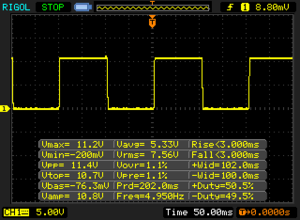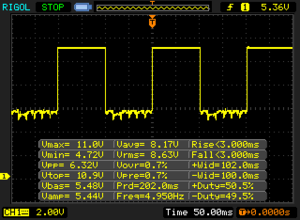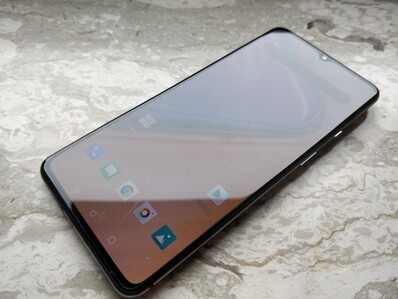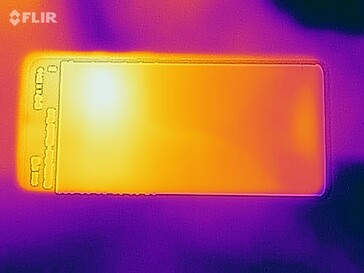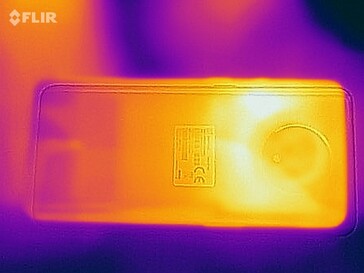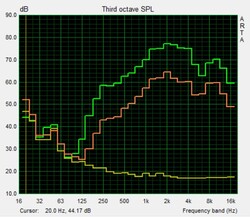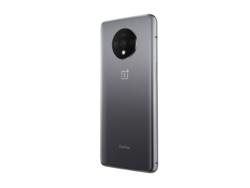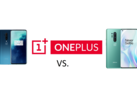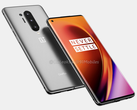OnePlus 7T smartphone review: A large package of improvements
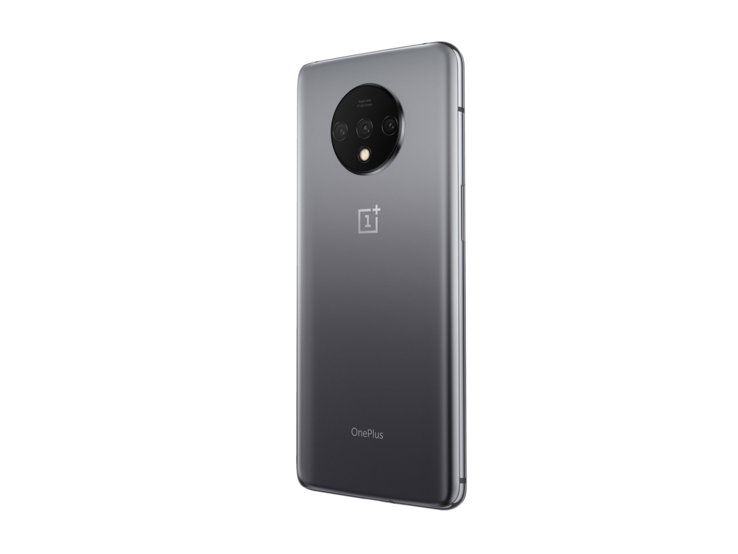
OnePlus has been known for many years for its limited model range and its high-quality yet relatively cheap smartphones. The Chinese manufacturer is committed to working closely with the community. The OnePlus 7T has been introduced in India now, and we've received a review device, so we'll be able to tell you if the purchase is worth it this time too.
With the OnePlus 7T, the manufacturer is making an offer to those who found the OnePlus 7 too similar to its predecessor and the OnePlus 7 Pro too big: Many of the features from the OnePlus 7 Pro in a slightly more compact housing and some completely new features on top, more power and all this at a good price. In this way, the 7T now comes with a 90-Hz display and a triple-camera setup.
A OnePlus 7T Pro will probably be available again this year, but according to leaks, it shouldn't be as different from the OnePlus 7T as was the case with the last model generation: The 7T Pro should mainly be bigger, offer a little more battery capacity and a longer zoom range. This sounds like the OnePlus 7T will be much more interesting, as well as being cheaper than the 7T Pro.
Comparison devices
Rating | Version | Date | Model | Weight | Height | Size | Resolution | Price |
|---|---|---|---|---|---|---|---|---|
| 85.8 % v7 (old) | v7 (old) | 10 / 2019 | OnePlus 7T SD 855+, Adreno 640 | 190 g | 8.13 mm | 6.55" | 2400x1080 | |
| 85.1 % v7 (old) | v7 (old) | 06 / 2019 | OnePlus 7 SD 855, Adreno 640 | 182 g | 8.2 mm | 6.41" | 2340x1080 | |
| 85.7 % v7 (old) | v7 (old) | 05 / 2019 | OnePlus 7 Pro SD 855, Adreno 640 | 206 g | 8.8 mm | 6.67" | 3120x1440 | |
| 88.6 % v6 (old) | v6 (old) | 08 / 2019 | Xiaomi Mi 9T Pro SD 855, Adreno 640 | 191 g | 8.8 mm | 6.39" | 2340x1080 | |
| 86.5 % v7 (old) | v7 (old) | 09 / 2019 | Apple iPhone 11 A13 Bionic, A13 Bionic GPU | 194 g | 8.3 mm | 6.10" | 1792x828 | |
| 85.1 % v7 (old) | v7 (old) | 03 / 2019 | Samsung Galaxy S10e Exynos 9820, Mali-G76 MP12 | 150 g | 7.9 mm | 5.80" | 2280x1080 |
Case – Almost like the Pro
The OnePlus 7T sits between the OnePlus 7 and the 7 Pro in terms of size and weight: With a display size of 6.55 inches and a weight of 190 grams. The waterdrop notch at the front has remained but has once again become smaller compared to the OnePlus 7. The material selection of a metal frame and glass on the front and back is the current standard for high-end smartphones; the workmanship is impeccable, and the OnePlus 7T sits very well in the hand. However, the pre-applied screen protector on the front is a bit bothersome to the touch when you run your fingers over the edges.
The device is significantly longer and minimally slimmer than the OnePlus 7, so that there's more screen area, but the device is still quite easy to use with one hand. However, due to its size, the device is rather not suitable for small hands. The smartphone is still not IP-certified. Furthermore, OnePlus excludes damage caused by water and dirt in its warranty, so you should be careful here.
The circular camera module on the back is a new design feature reminiscent of Motorola's smartphones. According to the manufacturer, it should be reminiscent of a classic camera lens. It's not bothersome to the touch, but it rather even offers a point where you can support the smartphone on your fingers well, so that it doesn't slip away so easily. It's also big enough that the OnePlus 7T doesn't wobble so easily when you type on it while it's lying on the table.
OnePlus is offering two different tones for colors: Frosted Silver and Glacier Blue.
Connectivity – Only one version
This year, OnePlus offers only one storage version, namely 8 GB of RAM and 128 GB of storage. Unfortunately, due to the early review no prices were determined yet, but OnePlus promises that these should be aligned with the prices of last year's models. That would mean a price below 600 Euros (~$658). We will update this article as soon as the manufacturer announces the prices (probably on October 10 at the official launch in London).
There hasn't been a 3.5 mm jack on OnePlus smartphones for some time now; this task must be done by the USB-C port. NFC and modern Bluetooth 5.0 with aptX HD are still included. There are also two SIM slots again but no way to expand storage via microSD.
Software – Fancy OxygenOS
With OxygenOS, OnePlus has been developing its own Android-based OS for years after initial experiments with CyanogenOS. The differences are quite clear. In this way, there has been a dark mode for a long time, and many features that OnePlus users wanted in the forums have also been built in.
OxygenOS 10.0.1, which is based on Android 10, is already preinstalled on our test device. Google's new update to its operating system includes, among other things, gesture control instead of the menu bar at the bottom of the screen. This has been around in OxygenOS for a long time, but since the gestures are slightly different with Google, OnePlus had to adjust the gestures accordingly. There are also smart replies that the system suggests for incoming text messages and improved control over privacy settings.
In addition, OnePlus also offers features from its test lab, such as DC Dimming, which we will discuss in more detail in the display section, and many other small improvements.
Communication and GPS – Broad LTE coverage
The quite new Wi-Fi 6 is not yet on board, but otherwise all common Wi-Fi standards are. In terms of Wi-Fi speed, the OnePlus 7T ranks slightly above its predecessor and slightly below the OnePlus 7 Pro. It's not a danger to the very fast iPhone 11 or the Galaxy S10e, but it sits well in the midfield of the upper-class devices.
As in the last generations, a lot of LTE frequencies are covered so that you don't usually have to worry when travelling abroad: You'll be able to dial into the local LTE networks. The maximum speed has increased to 1200 Mb/s download, which is an improvement of 200 Mb/s compared to the predecessor. We still have nothing to object to in regard to reception: Thanks to the glass back, the OnePlus 7T always maintains signal strength above 50% in our short test, even in buildings.
| Networking | |
| iperf3 transmit AX12 | |
| Apple iPhone 11 | |
| OnePlus 7 Pro | |
| Samsung Galaxy S10e | |
| OnePlus 7T | |
| Xiaomi Mi 9T Pro | |
| OnePlus 7 | |
| iperf3 receive AX12 | |
| Apple iPhone 11 | |
| Samsung Galaxy S10e | |
| OnePlus 7 Pro | |
| OnePlus 7T | |
| OnePlus 7 | |
| Xiaomi Mi 9T Pro | |
The smartphone reaches at least an approximate location in buildings close to the window. Outdoors, the accuracy increases very quickly to a very good 4 meters. The location with Google Maps is accurate down to a few meters in buildings, and the compass also works very precisely after an initial, short inaccuracy.
The OnePlus 7T shows itself in our practical test on the bike as a very exact navigator; it can even represent the loop at the turning point quite precisely, which is often difficult. It also performs passably in the old town streets, and it's a bit next to the street only on one section. All in all, the OnePlus 7T can absolutely be recommended for navigation purposes.
Telephone and call quality – OnePlus 7T with good call quality
With the phone app, OnePlus relies structurally on the distribution of Google's standard app, but there are minor graphical adjustments. VoLTE and VoWiFi are naturally supported.
The voice quality via the built-in earphone is good, and it gets very loud on request, but then the environment is also able to hear the conversation quite clearly. The speaker doesn't distort too much, and we can hear the counterpart with relative clarity. Our voice is also transmitted cleanly. The volume is quite high via the hands-free system too, and the quality remains quite high. We can't speak too quietly here, but otherwise, the microphone does a good job.
Cameras – Known setup with minor improvements
The OnePlus 7T takes over the camera setup of the OnePlus 7 Pro by and large; the telephoto lens even has a slightly higher resolution. There are three lenses: the standard lens, which has a resolution of 48 megapixels but combines them to 12 megapixels by default. Due to the larger area per pixel, a higher light efficiency is to be achieved, but photos with 48 megapixels are also possible on request. The telephoto lens for close-up photos now has a resolution of 12 megapixels, and the wide-angle lens, which is well-suited for landscapes, offers 16 megapixels.
Red is always a difficult color for cameras, and therefore, all the smartphones visibly struggle to focus on the red flower in our first test photo. Only the Olympus camera takes a slightly better picture here. Otherwise, we particularly like the photo taken with the OnePlus 7T; it pleases with image sharpness, many details and good color reproduction. The smartphone can also convincingly represent the gloomy sky. In low light, the smartphone impresses with good detail as well, even if the iPhone XS Max is still slightly ahead here. We took pictures with all three lenses in the photo gallery: It's visible that the tele- and wide-angle lenses don't have the same quality as the standard lens, but the images are still acceptable, and the stepless zoom between the three lenses results in a high degree of flexibility. The special night mode convinces us even significantly more this time than with the previous models: It ensures more sharpness and a better reproduction of strong contrasts in the image.
Videos can be recorded in 4K and 60 fps with the main lens; autofocus and exposure succeed easily and quickly, and the image quality itself convinces us very much, as was the case with the OnePlus 7 Pro.
The front-facing camera produces very clear pictures, and it can be used without issues for selfies and slightly more-demanding photos too.
In the lab, we test the reproduction of the camera again under perfect lighting and at 1 lux. The color reproduction of the OnePlus 7T is quite good; the test chart looks very sharp under perfect lighting, and text against a colored background is easily reproduced.
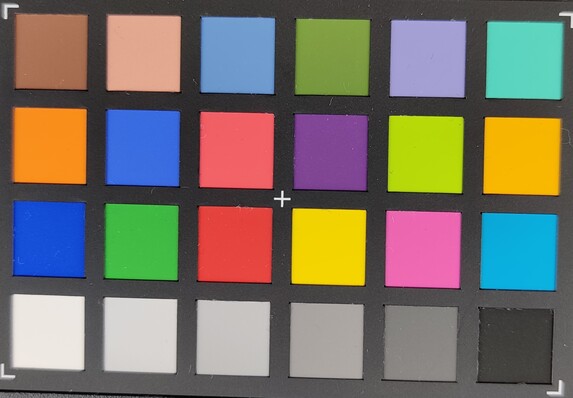
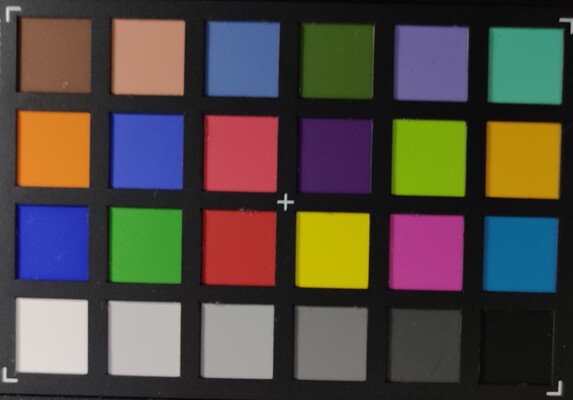
Accessories and warranty – Many accessories available
The massive fast-charging power adapter and a USB cable are enclosed in the box. In addition, there's a silicone case and a SIM tool. OnePlus doesn't include a headset, nor does it include an adapter from USB-C to 3.5 mm jack. In the online shop you can buy the USB-C Bullets, the in-ear headphones from OnePlus, which are also available in a wireless version. Besides adapters and numerous cases, OnePlus also offers an additional charger for just under 30 Euros (~$33).
The warranty on the devices covers 24 months.
Input devices and handling – OnePlus 7T with in-screen fingerprint scanner
Thanks to the 90-Hz display, which is already known from the OnePlus 7 Pro, the OnePlus 7T responds very immediately. The screen is also very sensitive and even reacts to small movements of the finger with the intended action. Responsiveness is very precise at the edges as well.
If desired, the smartphone can be unlocked via the fingerprint sensor located under the display or by facial recognition. The latter is only software-based but works with quite a high accuracy and couldn't be tricked by pictures or videos in our experiments. However, you have to get the smartphone out of standby by touching a button in order to activate facial recognition.
Alternatively, you can also use a fingerprint to unlock the device. The sensor is placed in a well-chosen location at the bottom of the screen, and the thumb finds the right place automatically. This solution isn't yet at the level of a standalone sensor, the finger is not recognized from time to time, and the unlocking takes a moment longer, but it's a good solution in combination with facial recognition.
Display – The 90-Hz screen is a great thing
The screen of the OnePlus 7T can again get significantly brighter than the predecessors if desired. Once again it's an AMOLED screen, which offers a slightly extended Full HD resolution at 2400x1080 pixels. This means that the resolution is lower than with the OnePlus 7 Pro, but the display still looks very sharp on our review device. The uniform brightness distribution has remained.
With a very slim but elongated aspect ratio of 20:9, the OnePlus 7T approaches the CinemaScope format of 21:9 in which movies are usually shown.
| |||||||||||||||||||||||||
Brightness Distribution: 96 %
Center on Battery: 693 cd/m²
Contrast: ∞:1 (Black: 0 cd/m²)
ΔE ColorChecker Calman: 3.42 | ∀{0.5-29.43 Ø4.77}
ΔE Greyscale Calman: 3.3 | ∀{0.09-98 Ø5}
99.6% sRGB (Calman 2D)
Gamma: 2.265
CCT: 6799 K
| OnePlus 7T AMOLED, 2400x1080, 6.6" | OnePlus 7 AMOLED, 2340x1080, 6.4" | OnePlus 7 Pro AMOLED, 3120x1440, 6.7" | Xiaomi Mi 9T Pro AMOLED, 2340x1080, 6.4" | Apple iPhone 11 IPS, 1792x828, 6.1" | Samsung Galaxy S10e AMOLED, 2280x1080, 5.8" | |
|---|---|---|---|---|---|---|
| Screen | -7% | 23% | 12% | 33% | 8% | |
| Brightness middle (cd/m²) | 693 | 603 -13% | 586 -15% | 594 -14% | 679 -2% | 426 -39% |
| Brightness (cd/m²) | 703 | 605 -14% | 584 -17% | 607 -14% | 671 -5% | 427 -39% |
| Brightness Distribution (%) | 96 | 94 -2% | 97 1% | 91 -5% | 93 -3% | 96 0% |
| Black Level * (cd/m²) | 0.68 | |||||
| Colorchecker dE 2000 * | 3.42 | 3.5 -2% | 1.39 59% | 1.51 56% | 0.8 77% | 2.14 37% |
| Colorchecker dE 2000 max. * | 6.12 | 7.7 -26% | 2.7 56% | 4.27 30% | 2.4 61% | 3.29 46% |
| Greyscale dE 2000 * | 3.3 | 2.7 18% | 1.6 52% | 2.6 21% | 1.1 67% | 1.8 45% |
| Gamma | 2.265 97% | 2.266 97% | 2.243 98% | 2.219 99% | 2.24 98% | 2.111 104% |
| CCT | 6799 96% | 6775 96% | 6672 97% | 6390 102% | 6610 98% | 6329 103% |
| Contrast (:1) | 999 |
* ... smaller is better
Screen Flickering / PWM (Pulse-Width Modulation)
| Screen flickering / PWM detected | 357 Hz | ||
The display backlight flickers at 357 Hz (worst case, e.g., utilizing PWM) . The frequency of 357 Hz is relatively high, so most users sensitive to PWM should not notice any flickering. However, there are reports that some users are still sensitive to PWM at 500 Hz and above, so be aware. In comparison: 53 % of all tested devices do not use PWM to dim the display. If PWM was detected, an average of 8084 (minimum: 5 - maximum: 343500) Hz was measured. | |||
The contrast goes into infinity thanks to AMOLED technology and pixels that can be turned off, which ensures bright colors and a very good black representation. In our tests with the CalMAN software, the color deviations are slightly lower than those of the OnePlus 7 but are still quite high compared to other high-end smartphones. If you rely on absolute color accuracy, you'll probably have to look around for slightly more expensive smartphones or the Pro models from OnePlus.
Although the color-space coverage is sufficient and almost 100% with sRGB, the OnePlus 7T is less suitable for those in need of larger color spaces.
Display Response Times
| ↔ Response Time Black to White | ||
|---|---|---|
| 6 ms ... rise ↗ and fall ↘ combined | ↗ 3 ms rise | |
| ↘ 3 ms fall | ||
| The screen shows very fast response rates in our tests and should be very well suited for fast-paced gaming. In comparison, all tested devices range from 0.1 (minimum) to 240 (maximum) ms. » 17 % of all devices are better. This means that the measured response time is better than the average of all tested devices (20.2 ms). | ||
| ↔ Response Time 50% Grey to 80% Grey | ||
| 6 ms ... rise ↗ and fall ↘ combined | ↗ 3 ms rise | |
| ↘ 3 ms fall | ||
| The screen shows very fast response rates in our tests and should be very well suited for fast-paced gaming. In comparison, all tested devices range from 0.165 (minimum) to 636 (maximum) ms. » 17 % of all devices are better. This means that the measured response time is better than the average of all tested devices (31.6 ms). | ||
Outdoors, the OnePlus 7T performs quite well thanks to its bright screen. Direct sunlight reduces readability on the glossy display, but it's still okay.
As expected, the OLED display also performs quite well in terms of viewing angles. Furthermore, it's easy to read even from very flat angles.
Performance – Only minor improvements
OnePlus chose the new Qualcomm Snapdragon 855+ for the OnePlus 7T, which again promises a little more performance than its predecessor. According to our benchmarks, the performance differences are around 5-10%, which is unlikely to be noticeable in practice. But that doesn't matter either, because the predecessors were already among the fastest smartphones on the market. The performance improvement in the graphics benchmarks is similar too.
| PCMark for Android | |
| Work performance score (sort by value) | |
| OnePlus 7T | |
| OnePlus 7 | |
| OnePlus 7 Pro | |
| Xiaomi Mi 9T Pro | |
| Samsung Galaxy S10e | |
| Average Qualcomm Snapdragon 855+ / 855 Plus (10286 - 15510, n=6) | |
| Work 2.0 performance score (sort by value) | |
| OnePlus 7T | |
| OnePlus 7 | |
| OnePlus 7 Pro | |
| Xiaomi Mi 9T Pro | |
| Samsung Galaxy S10e | |
| Average Qualcomm Snapdragon 855+ / 855 Plus (8702 - 11690, n=6) | |
| AnTuTu v7 - Total Score (sort by value) | |
| OnePlus 7T | |
| OnePlus 7 | |
| OnePlus 7 Pro | |
| Xiaomi Mi 9T Pro | |
| Apple iPhone 11 | |
| Samsung Galaxy S10e | |
| Average Qualcomm Snapdragon 855+ / 855 Plus (n=1) | |
According to benchmarks, the OnePlus 7T is minimally faster than its predecessors when surfing the Internet, but this difference should barely be noticeable in practice. Nonetheless, the perceived speed is faster thanks to the 90-Hz display. Scrolling on websites, for example, is even more fluid.
| Jetstream 2 - 2.0 Total Score | |
| Average of class Smartphone (23.8 - 387, n=147, last 2 years) | |
| Apple iPhone 11 (Safari Mobile 13.0) | |
| Average Qualcomm Snapdragon 855+ / 855 Plus (62.4 - 70.9, n=5) | |
| OnePlus 7T (Chrome 76) | |
| OnePlus 7 (Chrome 74) | |
| OnePlus 7 Pro (Chrome 74) | |
| Xiaomi Mi 9T Pro (Chrome 75) | |
| JetStream 1.1 - Total Score | |
| Apple iPhone 11 (Safari Mobile 13.0) | |
| OnePlus 7T (Chrome 76) | |
| OnePlus 7 (Chrome 74) | |
| Average Qualcomm Snapdragon 855+ / 855 Plus (113.9 - 120.8, n=5) | |
| Xiaomi Mi 9T Pro | |
| Speedometer 2.0 - Result 2.0 | |
| Average of class Smartphone (15.2 - 643, n=119, last 2 years) | |
| Apple iPhone 11 (Safari Mobile 13.0) | |
| OnePlus 7T (Chome 76) | |
| OnePlus 7 (Chome 74) | |
| OnePlus 7 Pro (Chome 74) | |
| Average Qualcomm Snapdragon 855+ / 855 Plus (39.1 - 69.1, n=4) | |
| Xiaomi Mi 9T Pro (Chrome 75) | |
| WebXPRT 3 - Overall | |
| Apple iPhone 11 (Safari Mobile 13.0) | |
| Average of class Smartphone (38 - 380, n=30, last 2 years) | |
| OnePlus 7 Pro (Chrome 74) | |
| OnePlus 7 (Chrome 74) | |
| Xiaomi Mi 9T Pro (Chrome 75) | |
| OnePlus 7T (Chrome 76) | |
| Average Qualcomm Snapdragon 855+ / 855 Plus (89 - 111, n=5) | |
| Octane V2 - Total Score | |
| Average of class Smartphone (2228 - 126661, n=194, last 2 years) | |
| Apple iPhone 11 (Safari Mobile 13.0) | |
| OnePlus 7T (Chrome 76) | |
| OnePlus 7 (Chrome 74) | |
| OnePlus 7 Pro (Chrome 74) | |
| Average Qualcomm Snapdragon 855+ / 855 Plus (23781 - 25353, n=5) | |
| Xiaomi Mi 9T Pro (Chrome 75) | |
| Samsung Galaxy S10e (Chrome 73) | |
| Mozilla Kraken 1.1 - Total | |
| Xiaomi Mi 9T Pro (Chrome 75) | |
| Samsung Galaxy S10e (Chrome 73) | |
| Average Qualcomm Snapdragon 855+ / 855 Plus (2007 - 2134, n=5) | |
| OnePlus 7T (Chrome 76) | |
| OnePlus 7 Pro (Chrome 74) | |
| OnePlus 7 (Chrome 74) | |
| Average of class Smartphone (257 - 28190, n=154, last 2 years) | |
| Apple iPhone 11 (Safari Mobile 13.0) | |
* ... smaller is better
OnePlus has once again installed super-fast UFS 3.0 storage, which offers a significant speed advantage over models with UFS 2.1 in many scenarios and especially in reading speeds.
| OnePlus 7T | OnePlus 7 | OnePlus 7 Pro | Xiaomi Mi 9T Pro | Apple iPhone 11 | Samsung Galaxy S10e | Average 128 GB UFS 3.0 Flash | Average of class Smartphone | |
|---|---|---|---|---|---|---|---|---|
| AndroBench 3-5 | 21% | 17% | 82% | -24% | 182% | 485% | ||
| Sequential Read 256KB (MB/s) | 1406 | 1463 4% | 1468 4% | 809 -42% | 792 -44% | 1520 ? 8% | 2235 ? 59% | |
| Sequential Write 256KB (MB/s) | 218.4 | 392 79% | 387 77% | 196.9 -10% | 194.1 -11% | 546 ? 150% | 1871 ? 757% | |
| Random Read 4KB (MB/s) | 170.1 | 175.3 3% | 174.1 2% | 142.5 -16% | 136.9 -20% | 206 ? 21% | 297 ? 75% | |
| Random Write 4KB (MB/s) | 29.9 | 28.7 -4% | 24.8 -17% | 148.5 397% | 24.1 -19% | 193.9 ? 548% | 343 ? 1047% |
Games – 90 Hz mostly only achievable through tricks
The 90-Hz display would actually be a fine thing for gamers, but as with the OnePlus 7 Pro, OnePlus doesn't allow refresh rates above 60 Hz in games. If you want to game in 90 Hz, you'll have to force your OnePlus 7T through adb commands. Our colleagues from XDA Developers describe how to do this here.
We test the XDA Developers trick in Real Racing and actually get a quite stable 90 FPS. With the GameBench app, we take a closer look at the frame rates of Arena of Valor and Asphalt 9. Both apps run at a stable 60 FPS without using any tricks, even at the highest settings. Nothing stands in the way of smooth gaming, as was expected of a high-end smartphone.
The controls over the display and the position sensor work without issues too.
Emissions – Hot flashes and good speakers
Temperature
The OnePlus 7T gets really hot under prolonged load, and we measure up to 48.2 °C (~119 °F) at the top of the screen. In idle usage, on the other hand, there's no noticeable warming.
When wanting to investigate the throttling behavior under prolonged load, we experience a surprise: Our OnePlus 7T quits the more demanding test in Manhattan 3.1 with repeated crashes of the app, stating that the device has become too hot. The T-Rex test doesn't show any throttling, and the normal benchmarks that log the frame rates don't show any issues either.
We have been in contact with OnePlus; maybe it's a defect in our review device since the problem is not yet known. The manufacturer will send us a new review unit, and we'll update the review accordingly as soon as we have new insights.
(-) The maximum temperature on the upper side is 48.2 °C / 119 F, compared to the average of 35.2 °C / 95 F, ranging from 21.9 to 247 °C for the class Smartphone.
(±) The bottom heats up to a maximum of 44.2 °C / 112 F, compared to the average of 34 °C / 93 F
(+) In idle usage, the average temperature for the upper side is 28.9 °C / 84 F, compared to the device average of 32.9 °C / 91 F.
Speakers
Once again, there are stereo speakers in the OnePlus 7T, for which the earpiece and a dedicated speaker at the bottom edge are used. The measured values are quite similar compared to the predecessor, making us assume it's the same sound system. But this is by no means a bad thing, because the OnePlus 7 was already pleasing with a warm and full sound. The OnePlus 7T features these qualities too and also offers a fairly high volume on request.
There is no 3.5 mm connection, but you can output sound either via the USB-C port or via Bluetooth with aptX HD. Both work smoothly and deliver a clean sound to the headphones or speakers.
OnePlus 7T audio analysis
(+) | speakers can play relatively loud (85.2 dB)
Bass 100 - 315 Hz
(-) | nearly no bass - on average 72.2% lower than median
(+) | bass is linear (0% delta to prev. frequency)
Mids 400 - 2000 Hz
(-) | nearly no mids - on average 72.2% lower than median
(+) | mids are linear (0% delta to prev. frequency)
Highs 2 - 16 kHz
(-) | nearly no highs - on average 72.2% lower than median
(+) | highs are linear (0% delta to prev. frequency)
Overall 100 - 16.000 Hz
(-) | overall sound is not linear (119.4% difference to median)
Compared to same class
» 88% of all tested devices in this class were better, 8% similar, 3% worse
» The best had a delta of 11%, average was 35%, worst was 134%
Compared to all devices tested
» 96% of all tested devices were better, 3% similar, 1% worse
» The best had a delta of 4%, average was 24%, worst was 134%
OnePlus 7 audio analysis
(+) | speakers can play relatively loud (85.6 dB)
Bass 100 - 315 Hz
(-) | nearly no bass - on average 70.9% lower than median
(+) | bass is linear (0% delta to prev. frequency)
Mids 400 - 2000 Hz
(-) | nearly no mids - on average 70.9% lower than median
(+) | mids are linear (0% delta to prev. frequency)
Highs 2 - 16 kHz
(-) | nearly no highs - on average 70.9% lower than median
(+) | highs are linear (0% delta to prev. frequency)
Overall 100 - 16.000 Hz
(-) | overall sound is not linear (118.1% difference to median)
Compared to same class
» 87% of all tested devices in this class were better, 8% similar, 5% worse
» The best had a delta of 11%, average was 35%, worst was 134%
Compared to all devices tested
» 96% of all tested devices were better, 2% similar, 1% worse
» The best had a delta of 4%, average was 24%, worst was 134%
Battery life – A lot of stamina
Energy consumption
The OnePlus 7T consumes slightly more energy than its predecessor; it's overall slightly at the level of the OnePlus 7 Pro. This doesn't necessarily make it one of the most economical smartphones on the market, but an iPhone 11 is, for example, still much hungrier to some extent when it comes to idle consumption.
| Off / Standby | |
| Idle | |
| Load |
|
Key:
min: | |
| OnePlus 7T 3800 mAh | OnePlus 7 3700 mAh | OnePlus 7 Pro 4000 mAh | Xiaomi Mi 9T Pro 4000 mAh | Apple iPhone 11 3110 mAh | Samsung Galaxy S10e 3100 mAh | Average Qualcomm Snapdragon 855+ / 855 Plus | Average of class Smartphone | |
|---|---|---|---|---|---|---|---|---|
| Power Consumption | 21% | -9% | 15% | -7% | 12% | -11% | -7% | |
| Idle Minimum * (Watt) | 0.9 | 0.6 33% | 0.9 -0% | 0.7 22% | 0.56 38% | 0.6 33% | 1.183 ? -31% | 0.847 ? 6% |
| Idle Average * (Watt) | 1.4 | 1.1 21% | 1.8 -29% | 1 29% | 2.99 -114% | 1.2 14% | 1.883 ? -35% | 1.448 ? -3% |
| Idle Maximum * (Watt) | 2.9 | 2 31% | 2.9 -0% | 1.3 55% | 3.02 -4% | 1.5 48% | 2.32 ? 20% | 1.633 ? 44% |
| Load Average * (Watt) | 4.7 | 4 15% | 5.5 -17% | 5.2 -11% | 4.17 11% | 5.2 -11% | 4.91 ? -4% | 6.96 ? -48% |
| Load Maximum * (Watt) | 8.3 | 8 4% | 8.2 1% | 10 -20% | 5.44 34% | 10.2 -23% | 8.59 ? -3% | 11.3 ? -36% |
* ... smaller is better
Battery life
100 mAh more battery capacity than with the OnePlus 7 is no reason for enthusiasm, especially since the runtimes proved to be at a very similar level to the predecessor in our tests. The OnePlus 7T lasts about 15 hours in the Wi-Fi test, which is a very good performance. Two workdays without charging shouldn't be a problem, even if you use the device a lot.
Wireless charging is not available on the OnePlus 7T; OnePlus is still slow to implement this technology. Instead, WarpCharge 30T is now on board, which is a slightly improved version of the manufacturer's super-fast charging technology. Since OnePlus lets the charging management run in the power adapter, these are larger than with other manufacturers, but also very fast when charging in exchange: The OnePlus 7T takes just under 1 hour to fully charge. This also keeps the smartphone very cool when charging. In addition, OnePlus promises that the first 10-20% of charge is now available even faster after plugging in.
| OnePlus 7T 3800 mAh | OnePlus 7 3700 mAh | OnePlus 7 Pro 4000 mAh | Xiaomi Mi 9T Pro 4000 mAh | Apple iPhone 11 3110 mAh | Samsung Galaxy S10e 3100 mAh | |
|---|---|---|---|---|---|---|
| Battery runtime | -1% | -15% | -9% | 13% | -39% | |
| Reader / Idle (h) | 33.4 | 33.2 -1% | 29.1 -13% | 29.5 -12% | 46.1 38% | 19.8 -41% |
| H.264 (h) | 16.1 | 15.6 -3% | 13.4 -17% | 16.5 2% | 19.1 19% | 13.3 -17% |
| WiFi v1.3 (h) | 14.9 | 15 1% | 12.8 -14% | 12.7 -15% | 14.4 -3% | 6.9 -54% |
| Load (h) | 4.7 | 4.6 -2% | 3.9 -17% | 4.2 -11% | 4.5 -4% | 2.7 -43% |
Pros
Cons
Verdict – Great technology with minor shortcomings
OnePlus has given the OnePlus 7T a large update with many features previously reserved for the Pro model. It's a good thing for the buyer because they receive a lot for less money: There's the even faster WarpCharge 30T charging technology, the better camera, the fancy chassis and of course, above all, the terrific 90-Hz display, which is a blessing in everyday menu operations. Unfortunately, OnePlus doesn't use the 90 Hz in games yet.
On the one hand, one has to congratulate OnePlus for daring to ignore features such as wireless charging: According to an interview with the founder, the technology doesn't meet the requirements in terms of speed and reliability yet. At the same time, it is certainly annoying for some users that in addition to wireless charging, an IP certification and storage expansion via microSD are also missing.
There are differences to the Pro model in terms of the display; the OnePlus 7T is rather at the bottom of the upper class here, and last year's Pro model offers even more when it comes to resolution and color accuracy.
The OnePlus 7T is a great offering in the upper class. If you don't care about wireless charging and waterproofing, you can pull the purchase trigger on this smartphone.
Overall, you get a lot for your money with the OnePlus 7T. With its extremely fast charging process and the 90-Hz display, the OnePlus 7T proves to be a very pleasant companion in everyday life.
OnePlus 7T
- 09/03/2022 v7 (old)
Florian Schmitt




